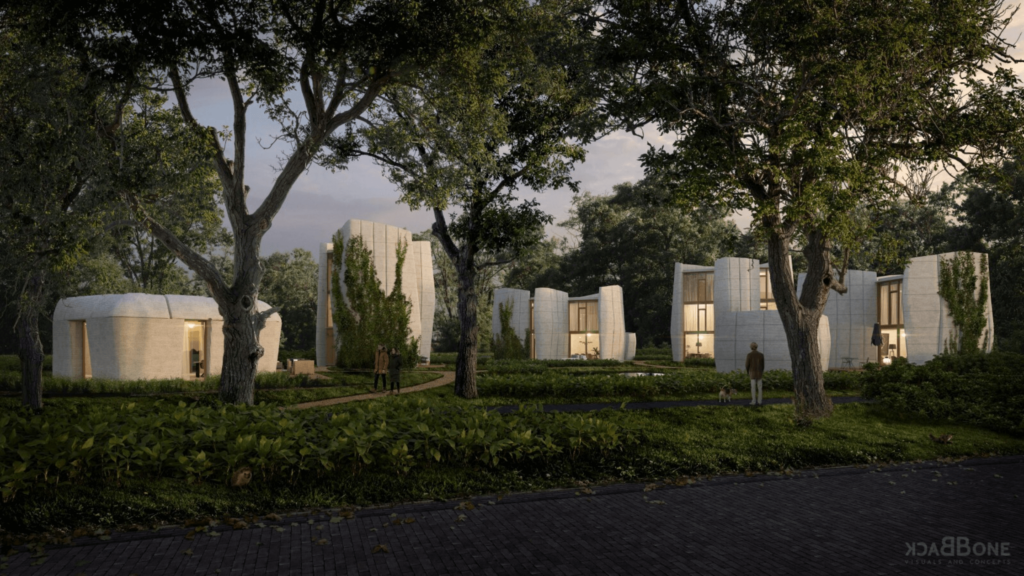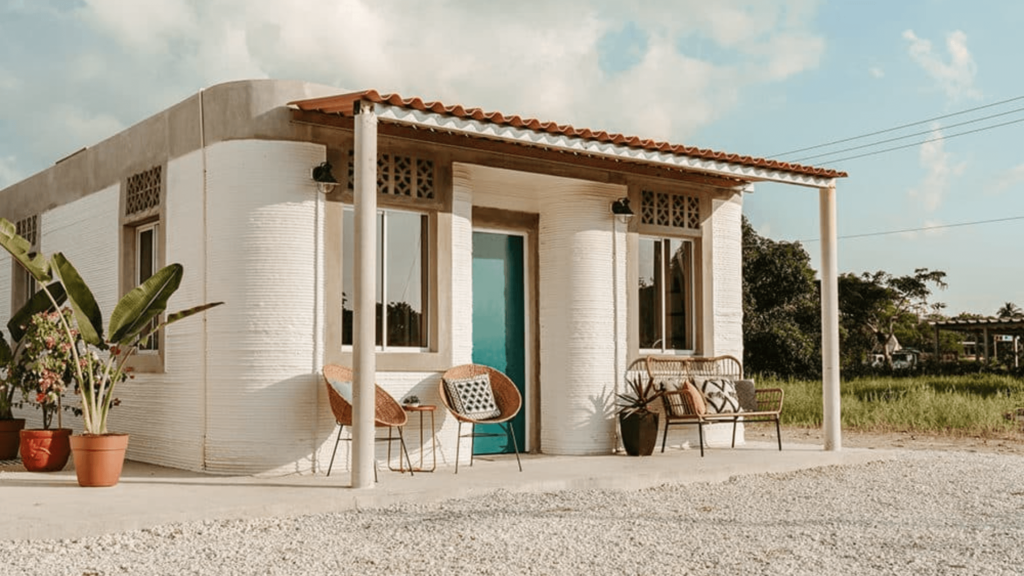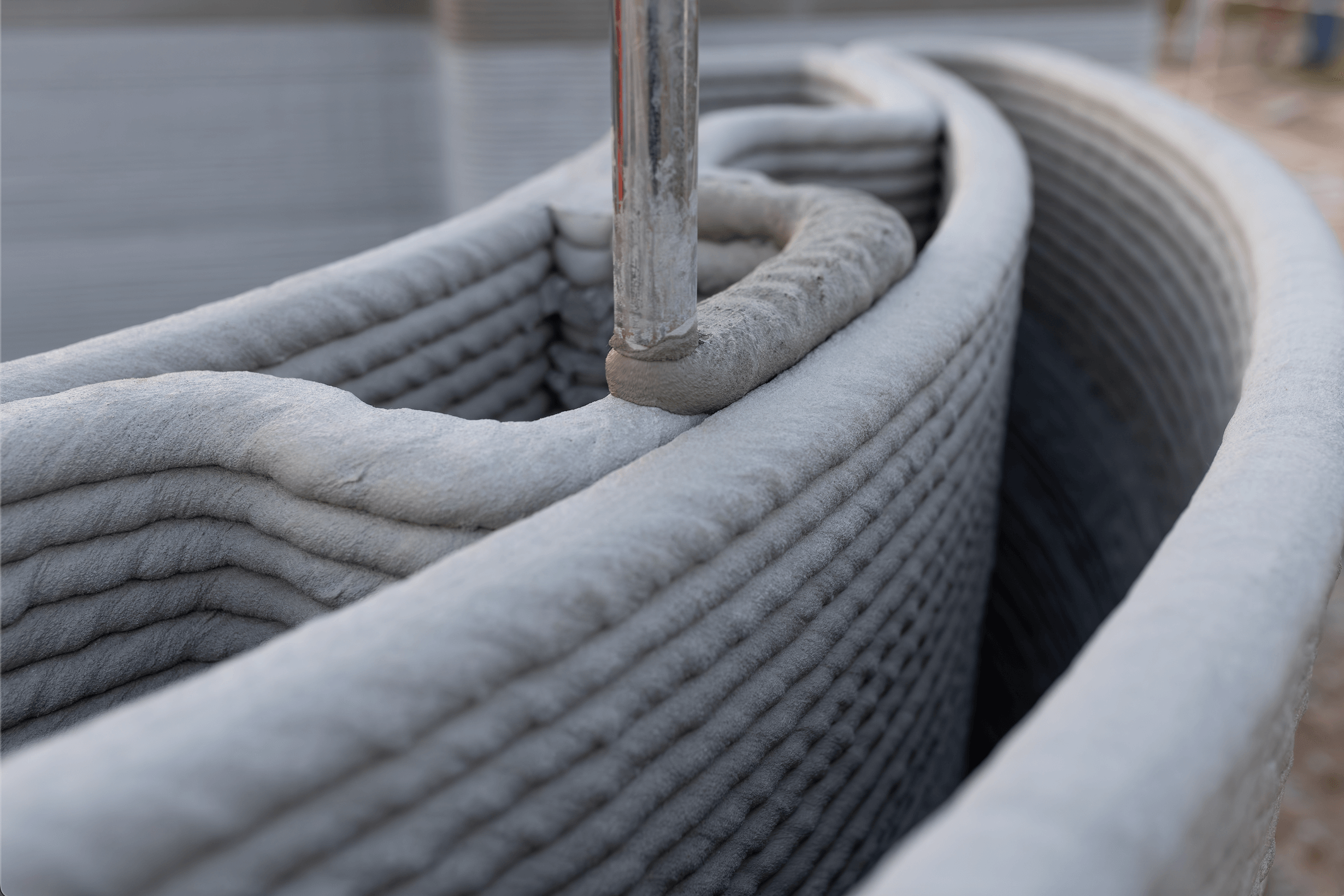With skyrocketing property prices, limited space, and a growing population, the demand for affordable housing has never been higher. Traditional construction methods, while reliable, often struggle to keep pace with the urgency and scale of this challenge. With its speed, efficiency, and ability to use eco-friendly materials, 3D printing in construction is rapidly emerging as a viable solution to the global housing crisis.
According to the United Nations, over 1.6 billion people live in inadequate housing, with an estimated 100 million people homeless. A 2021 report from the World Economic Forum highlighted that by 2025, 1.8 billion people will require adequate, affordable housing—a number that current construction methods simply can’t meet.
In the search for new and innovative solutions, 3D printing is coming to the forefront. Imagine being able to “print” a house layer by layer, using eco-friendly materials, all within a fraction of the time and cost of conventional building methods. For instance, a 3D-printed home can be built in just 24 hours, compared to the several months it typically takes for traditional construction. The cost? As little as $4,000, compared to $350,000 for the average price of a newly constructed home in the U.S.
From reducing waste and cutting costs to creating sustainable and energy-efficient homes, 3D printing offers a glimpse into a more affordable and environmentally friendly future.
Understanding 3D printing in construction
The process involves creating a physical object layer by layer from a digital model. Instead of ink or plastic, construction 3D printers use a mix of concrete, recycled materials, or other building compounds extruded through a nozzle to form a structure’s walls, floors, and even roofs. The process is highly automated, with the printer following a pre-programmed “blueprint,” allowing for architectural details that might be difficult or expensive to achieve using traditional methods.
One of the most exciting aspects of 3D printing is the versatility of materials. While concrete is most commonly used, researchers and developers are exploring eco-friendly alternatives like recycled plastics, sustainable composites, and even locally sourced raw earth. These materials reduce the environmental footprint and allow for the use of resources readily available in specific regions, further cutting down costs and transportation emissions.
Benefits over traditional construction
By leveraging innovative materials and reducing both time and costs, 3D printing in construction holds the potential to revolutionize how we approach housing construction, particularly in the face of growing global challenges:
Speed and efficiency
One of the standout advantages of 3D printing in construction is the incredible speed at which homes can be built. Traditional construction projects can take months, if not years, to complete. In contrast, a 3D-printed house can be erected in several days—or even hours.
Impact on urgent housing needs
The speed and efficiency of 3D printing make it an ideal solution for addressing urgent housing crises. Whether providing shelter after a natural disaster or rapidly scaling up housing in urban areas facing severe shortages, 3D printing can meet these challenges head-on. The ability to quickly produce safe, durable homes means that communities can recover and rebuild faster, reducing the long-term impacts of displacement and instability.
Cost-effectiveness
The efficiency of 3D printing is incredibly cost-effective. 3D printing can reduce construction costs by 30-50% by minimizing labor costs and reducing material waste. This makes it a fantastic option for affordable housing projects where every dollar counts. Since the process is largely automated, there’s less chance for human error, which means fewer expensive mistakes.
Waste reduction
3D printing offers a solution to one of the industry’s biggest problems: waste. Traditional construction methods often result in significant material wastage, with off-cuts and unused materials piling up on-site and energy-intensive building processes adding to the environmental price tag. 3D printing, on the other hand, is an additive process, meaning it only uses the exact amount of material needed to create the structure. This precision drastically reduces waste, making 3D printing more environmentally friendly than conventional building techniques.
Cost reduction
The savings from 3D printing go straight into making housing more affordable. For low-income families, owning a home can be life-changing, bringing stability, security, and a strong sense of community. In places where affordable housing is hard to come by, 3D printing is a real solution to fill that gap. Homes that used to cost hundreds of thousands of dollars can now be built for a fraction of that amount—sometimes as little as $4,000 to $10,000. This huge drop in costs means we can better meet the housing needs of underserved communities, whether in developed or developing countries.
Case studies


Several pioneering projects around the world are leveraging 3D printing for sustainable housing. For instance, in the Netherlands, the “Project Milestone” initiative is creating 3D-printed homes with natural, sustainable materials, like bio-based composites, which are eco-friendly and fully recyclable. In Mexico, a 3D-printed community is being developed to provide affordable housing to low-income families, using materials that significantly reduce waste and energy use.
Another notable example is the work of Habitat for Humanity, which has successfully built 3D-printed homes in North America. These homes are not only affordable and quick to build but are also designed with sustainability in mind. By using energy-efficient designs and materials that reduce environmental impact, these projects showcase the immense potential of 3D printing to create housing that’s both eco-friendly and accessible to those in need.
Final thoughts
The future of housing and community will no doubt include 3D printing, where homes are built quickly, affordably, and sustainably, using materials that are kind to the planet and designed to meet the specific needs of each community.
As 3D printing technology continues to evolve, it will likely become a cornerstone of modern construction, reshaping cities and improving the quality of life for countless individuals. The future of housing is here, and it’s being printed one layer at a time.



10 comments